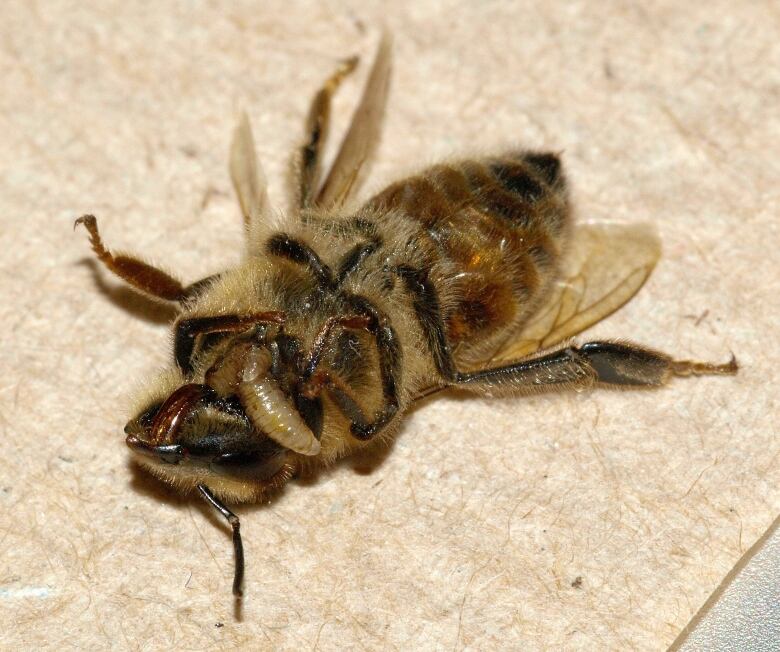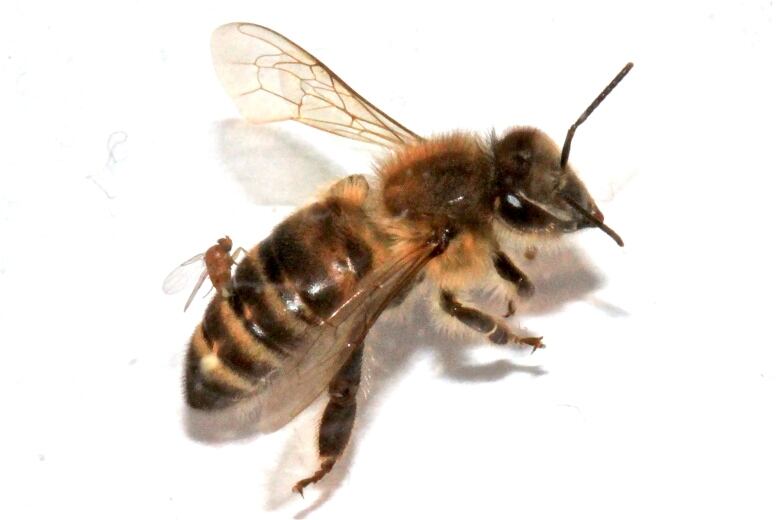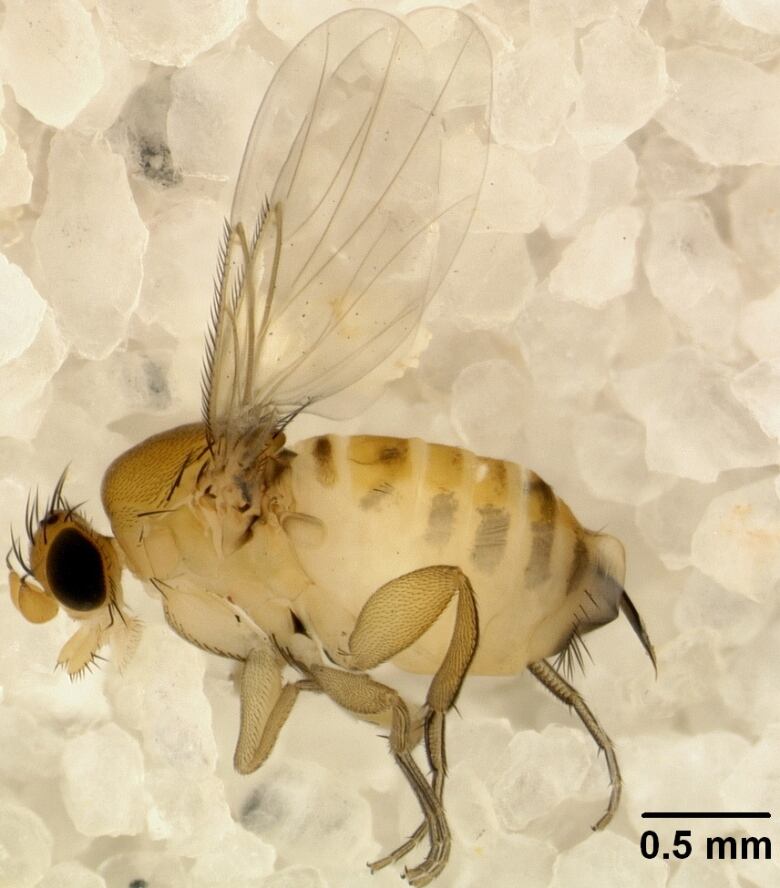'Zombie' honeybees make first appearance in Canada
Bees infected with deadly maggots found by B.C. beekeeper, Zombee Watch project

Honeybees infected with deadly parasitic maggots that make them behave like zombies have been found in Canada for the first time.
Beekeeper Sarah Wallbank, who lives just outside Nanaimo, on Vancouver Island, noticed bees acting strangely in July. They were coming out at night a time when bees normally sleep in their hives and repeatedly smashing themselves into her porch light.
"These bees were so frenetic," she told CBC News. "It's like somebody agitatedly tapping their fingers on a desk tap tap tap tap tap."
Eventually, the bees fall to the ground and stagger around in a tight circle like zombies, then die within a few hours.
"It's just the saddest, weirdest thing," Wallbank said.
Wallbank had only set up the hive on her patio in April, but even as a new beekeeper, she was sure the strange behaviour wasn't natural. She did an internet search and came across the website for ZomBee Watch, a citizen science project based out of San Francisco State University that tracks bees showing zombie-like behaviour.
The website advised her to collect the dead bees, take a series of pictures, and submit them online:
- One when the bees were first collected, shortly after death.
- One five to seven days later, when the maggots burrow out of the bee and form brown pupae.
- One 14 to 30 days after that, when an adult phorid fly, smaller than fruit fly, emerges from the pupae.
Wallbank did that, and after submitting the second photo featuring the brown pupae, she got a confirmation from Brian Brown, a phorid fly expert at the Natural History Museum of Los Angeles County that her bees were indeed "zombie bees" infected with the maggots of a parasitoid fly called Apopcephalis borealis.

Parasitoids are parasitic organisms that don't just live off their hosts, but eventually kill them. Female phorid flies infect a host by climbing on its abdomen, stabbing it with a needle-like organ called an ovipositor, and depositing eggs inside the host that later hatch into maggots that eat the host from the inside.
Recent discovery in honeybees
A. borealis, which is found all over North America, from Alaska to the southern U.S., was known to target bumblebees or yellow jacket wasps as hosts, said John Hafernik, professor of biology at San Francisco State University.
But it's only within the past decade that the flies have been found parasitizing honeybees in the U.S., and Wallbank's observation was the first time that had ever been seen in Canada.

Wallbank said she had a mixed reaction to that news. On one hand, she said, she was glad to be able to help scientists keep tabs on bee health.
"But it's also disappointing that there's another predator that's targeting honeybees," she added.
Wallbank has notified B.C.'s Ministry of Agriculture about the new discovery.
But she says so far, it doesn't seem to have had much effect on her hive, which remains busy and productive.
1 more threat
Still, it's one more threat to honeybees at a time when many hives are already dealing with viral and fungal diseases, parasitic varroa mites, and the effects of pesticides, Hafernik said.
That's one of the reasons he launched the ZomBee Watch project to track how widespread the parasite is among honeybees and how big an effect it has on honeybee health.
"Could it cause a hive to fail, especially in conjunction with all the other things?" he wondered.
Hafernik launched ZomBeeWatch in 2012, four years after he discovered the fly infection for the first time in honeybees in the San Francisco area.
Since then, people from across North America have submitted 886 photos and samples for tests. Infected bees have been found along the U.S. West Coast and in South Dakota. They were first reported in New England in 2013, then the mid-Atlantic U.S. in 2014 and in upstate New York in 2015.

Hafernik said infected honeybees could be in nearby areas of Canada as well, such as Ontario. He added that the fly itself is common in parts of Canada one study found that 60 per cent of bumblebees in Alberta were infected.
One of the big questions he's trying to answer is whether the fly's ability to infect honeybees is a recent development or just went unnoticed until now.
"Generally, beekeepers are unaware because most of the infected bees leave," he said.
That said, he is suspicious that it might be something more recent, as he said there have been few reports in the past of honeybees being active at night.












_(720p).jpg)


 OFFICIAL HD MUSIC VIDEO.jpg)
.jpg)



























































































